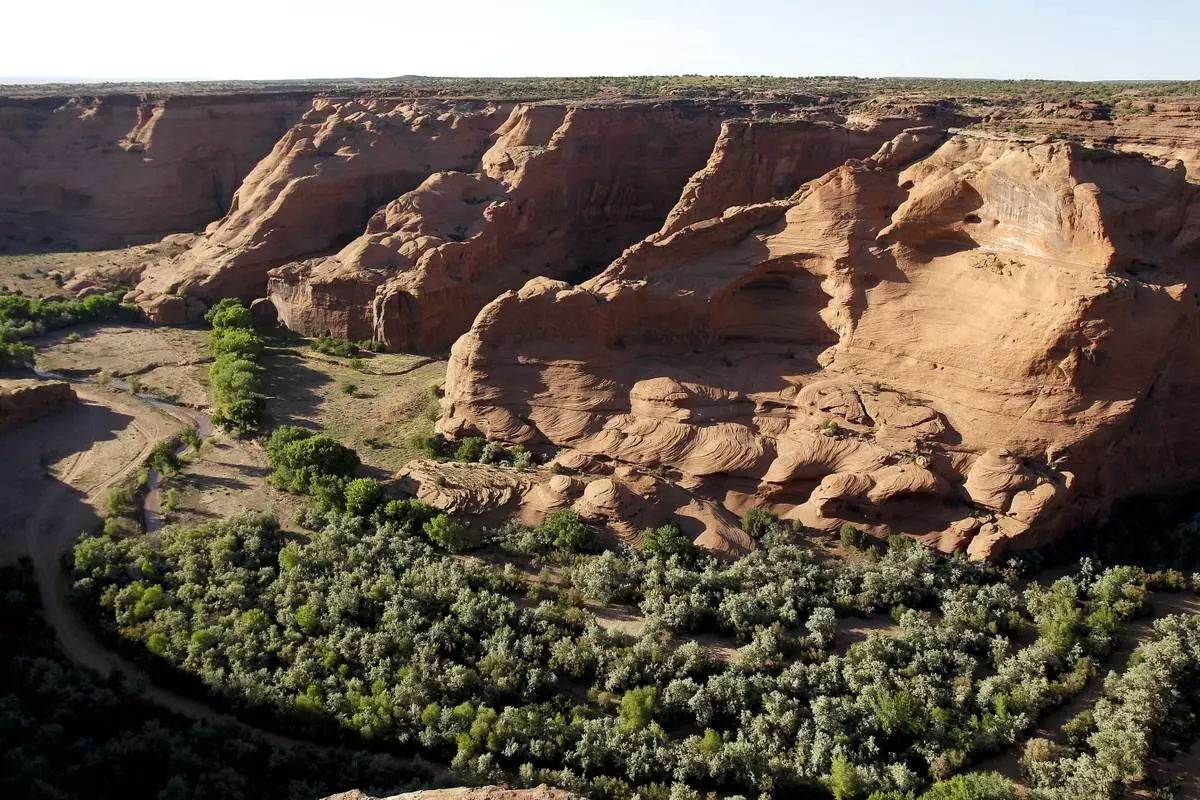DENVER (AP) — Investigators on Friday were trying to figure out what led to an elevator accident inside a former Colorado gold mine that killed a tour guide, injured four others and left a separate group of 12 people trapped for hours at the bottom of the tourist attraction 1,000 feet (305 meters) beneath the surface.
The elevator was descending into the Mollie Kathleen Gold Mine on Thursday in the mountains near Colorado Springs. At around 500 feet (152 meters) down, the person operating the elevator from the surface “felt something strange" and stopped it, Teller County Sheriff Jason Mikesell said.
The elevator was still operable, and those on board were brought back up within 20 minutes, the sheriff said. A door on the elevator was broken when it was raised.
“We don't know if the door malfunctioned or not or if something else occurred. There's a lot that goes on in these little elevators,” he said. “We just know that the door was broken somehow.”
The man killed, Patrick Weier, 46, had a young child and was from the nearby town of Victor, Colorado. The exact circumstances of his death were not disclosed, but the sheriff said he died because of the elevator's mechanical issue and not due to a medical issue.
Eleven other people, including two children, who were riding the elevator during the mishap were brought up with it following the accident. Four had minor injuries including back pain, neck pain and arm pain, the sheriff said.
Twelve adults from a second group were trapped below ground for about six hours while engineers made sure the elevator could be used. The group had access to water and used radios to communicate with authorities, who told them there was an elevator issue, Mikesell said.
They were hoisted up in groups of four over 30 minutes. Officials had been prepared to bring them up by rope if necessary.
Most people who were in the elevator when it malfunctioned were later taken to a local relief center, where some got showers, new clothes and sandwiches, said Ted Borden, with the Community of Caring Foundation in Cripple Creek.
“It was still very raw, but there was some good camaraderie,” Borden said.
Elevator accidents at mines are extremely rare, said Steven Schafrik, a University of Kentucky associate professor of mining engineering. They have been used by the industry to carry people and material since the mid-1800s, he said, and modern elevators are equipped with fail-safe devices that prevent them from falling far if a cable breaks.
“They're just ridiculously safe,” Schafrik said of mining elevators.
He declined to comment directly on the Colorado accident.
Mikesell said the family that owns the mine had run it as a tourist attraction for generations and worked to make it safe.
Mines that operate as tourist attractions in Colorado must designate someone to inspect the mines and the transportation systems daily, according to the state Division of Reclamation, Mining and Safety. Mikesell said he didn’t know the date of the last inspection at the Mollie Kathleen Mine. Records of the inspections weren’t immediately available online.
Changes to the elevator were made in 1988 after the mine came under new ownership, according to the mine's website. A second car that could carry nine people was suspended below the existing elevator, and a new motor was installed to accommodate the increased weight, the website says.
The sheriff said the broken door was on the topmost car. He did not know which one the victim was in.
Weier was a “phenomenal” guide and told visitors that he was an experienced miner, said Jennifer Nolan of Zanesville, Ohio, who toured the mine in August.
The tour began with Nolan's group descending into the shaft with six people in each of the elevator’s two cars.
The cages were “very, very, very tight,” she said. People stood shoulder-to-shoulder, but the ride was smooth, she recalled.
A mine inspector was among those on their tour, Nolan said, but she believed he was inspecting the operations underground, not the elevator. The area at the bottom of the shaft was large, with demonstrations of mining technology over the decades.
The accident was under investigation by local and state authorities along with the U.S. Mine Safety and Health Administration and the Occupational Safety and Health Administration.
The incident, which was reported to authorities at about noon, happened during the final week of the Mollie Kathleen Gold Mine season before it shuts down for the winter, Mikesell said.
The mine's owners issued a statement Friday expressing their condolences and thanking emergency responders. The mine will be closed until further notice, they said.
The mine is in Cripple Creek, a town of about 1,100 people southwest of Colorado Springs.
It opened in the 1800s and closed in 1961, but continued as a tourist site. Its website describes a one-hour tour where visitors can see veins of gold in the rock and ride an underground tram.
A woman named Mollie Kathleen Gortner discovered the site of the mine in 1891 when she saw quartz laced with gold, according to the company’s website.
Brown reported from Billings, Montana, Gruver from Cheyenne, Wyoming, and Amy Beth Hanson from Helena, Montana.

Emergency personnel stage outside the Mollie Kathleen Gold Mine in Cripple Creek, Colo., Thursday, Oct. 10, 2024, after one person died in an equipment malfunction during a tour of the mine according to the Teller County Sheriff's Department. (Arthur Trickette-Wile/The Gazette via AP)

A winch brings up trapped mine visitors Thursday, Oct. 10, 2024, at the Mollie Kathleen Gold Mine in Cripple Creek, Colo. (Arthur Trichett-Wile/The Gazette via AP)

First responders work the scene Thursday, Oct. 9, 2024, at Mollie Kathleen Gold Mine in Cripple Creek, Colo. (Arthur H. Trickett-Wile/The Gazette via AP)

A police officer moves a barrier for an emergency vehicle Thursday, Oct. 9, 2024, at Mollie Kathleen Gold Mine in Cripple Creek, Colo. (Arthur H. Trickett-Wile/The Gazette via AP)










